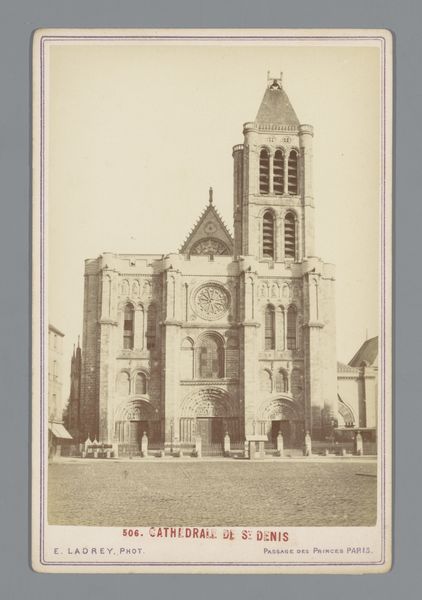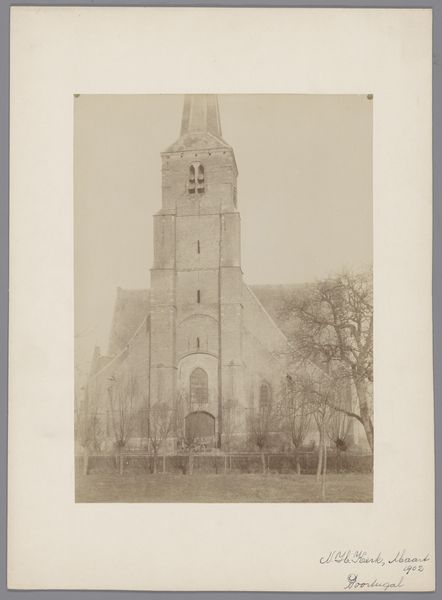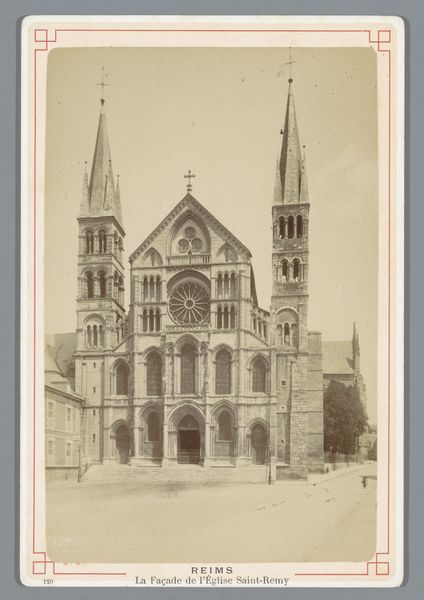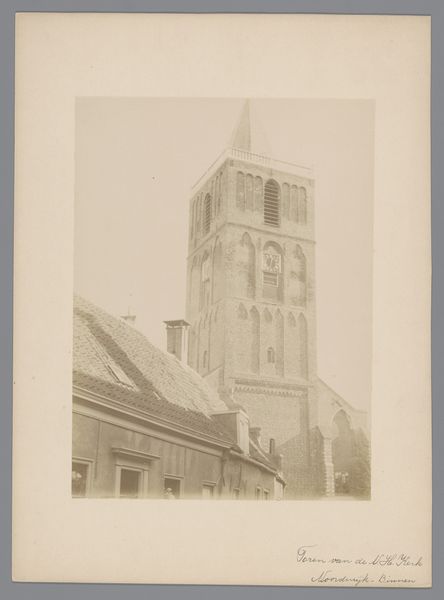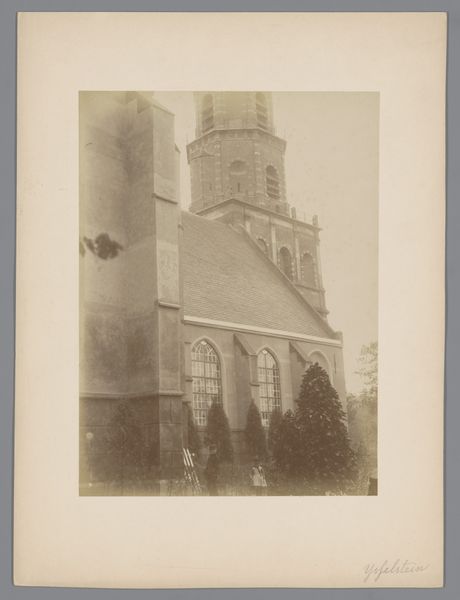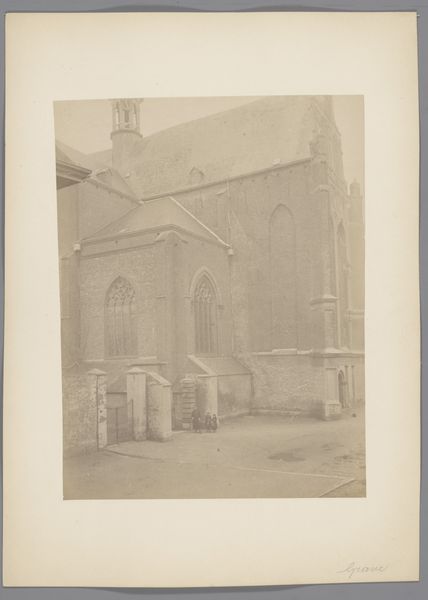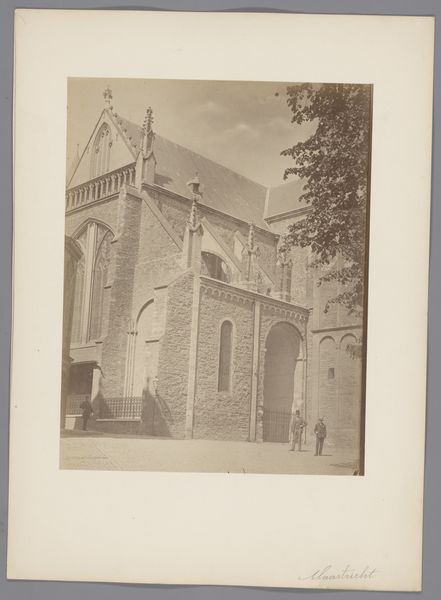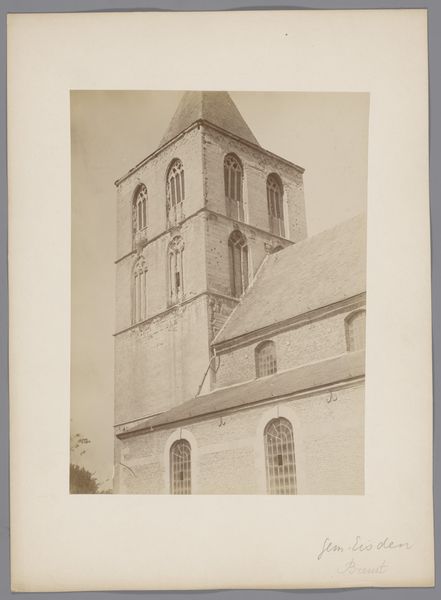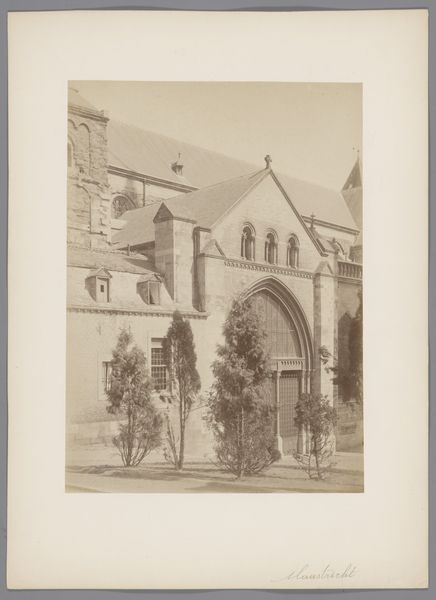
Dimensions: height 163 mm, width 109 mm
Copyright: Rijks Museum: Open Domain
Curator: Ah, a glimpse into late 19th-century France. This is Étienne Neurdein’s photograph, "Gezicht op de kerk Saint-Martin te Laon," taken around 1895, captured via an albumen print. What strikes you most immediately? Editor: The overwhelming feeling is…silence. The towers rise like petrified screams, frozen mid-echo. And the color—or lack thereof—gives it an antique solemnity, doesn’t it? It feels very far away. Curator: That solemnity speaks to the Neoclassical aesthetic, indeed. Note how Neurdein’s composition emphasizes symmetry, particularly in the church’s facade. The photograph becomes a study of form, carefully delineating line and shadow. Editor: And the almost complete absence of people. Did Neurdein do that on purpose? It lends to this odd sensation of isolation, as if this magnificent structure exists in its own little, sepia-toned bubble, untouched by the world. Curator: I believe it serves to elevate the church to a monument—a representation of timelessness and order. It allows one to appreciate the architecture itself. This meticulous organization, further underlined by the very medium: the albumen print allows for such crisp details. Editor: And those towers… They pierce the sky like desperate pleas. It makes you wonder what Neurdein was feeling when he took the picture. I imagine the early photographers, to be more like chemists or magicians! Creating illusions, aren’t we? Curator: One might argue Neurdein captured an ideal rather than merely documenting a reality. Look at the stark tonal range emphasizing geometric precision. But you are not wrong; that precise method certainly speaks of scientific engagement in his artistic vision. Editor: Yes! So, this image feels, cold, a calculated study. A gorgeous calculated study, of course. Still, give me the feeling—give me something imperfect, something more human—otherwise it risks becoming a sterile exercise. Curator: Perhaps, but there’s a peculiar beauty in this pursuit of architectural form. Editor: Beauty it certainly has, but maybe too rigid in its perfection to be truly sublime? Curator: A fitting debate. It's interesting to note how such meticulously crafted images like these can still evoke different emotions, proving how photographs from the 19th century hold more complexity.
Comments
No comments
Be the first to comment and join the conversation on the ultimate creative platform.
